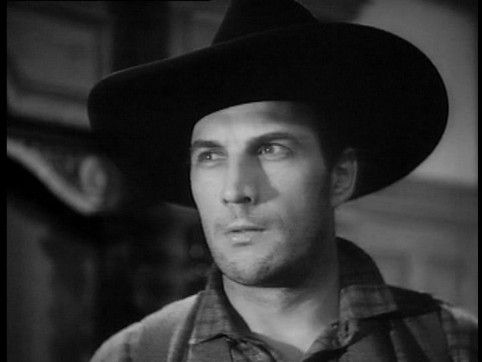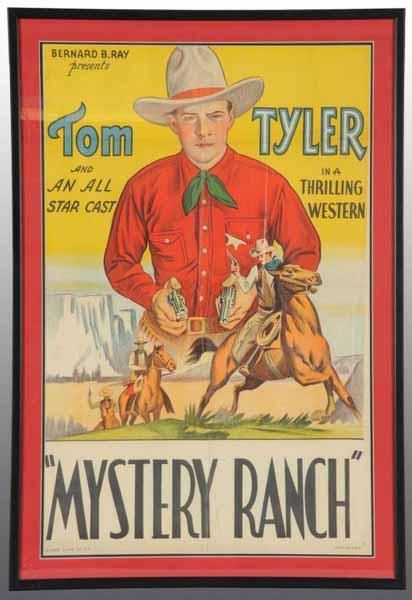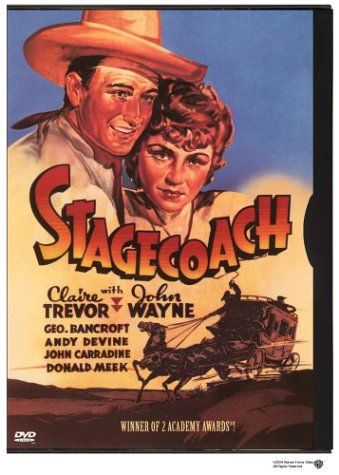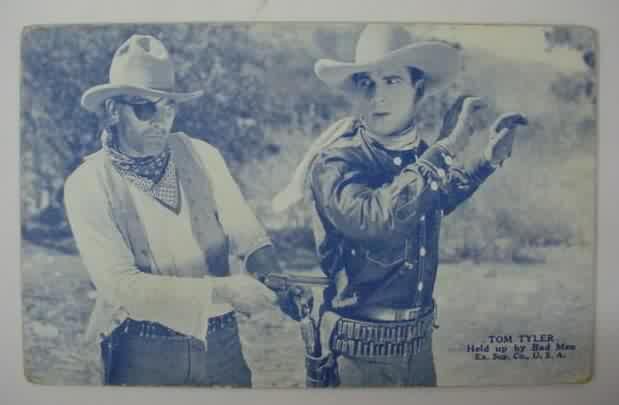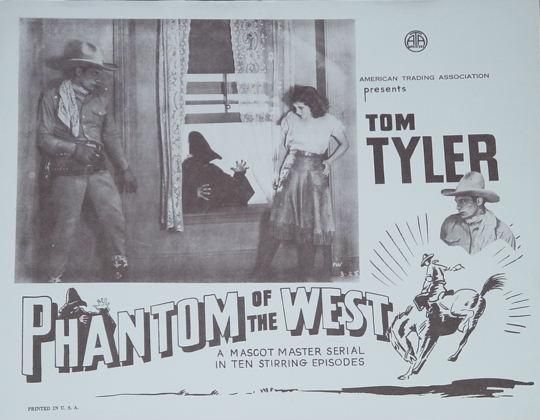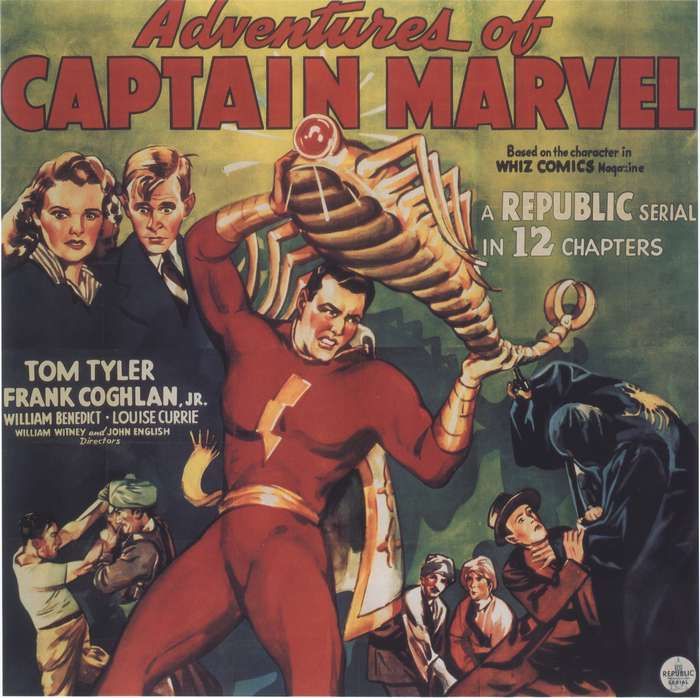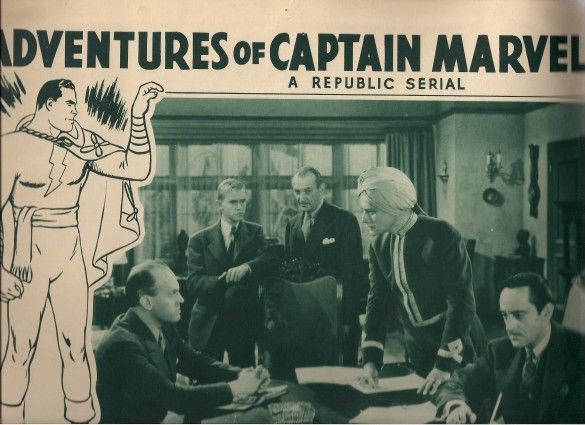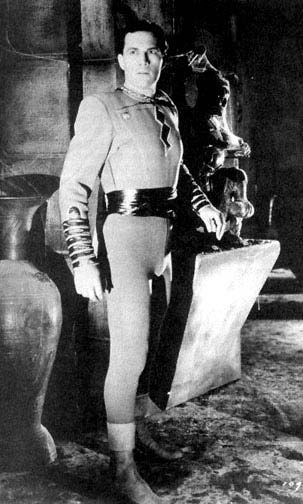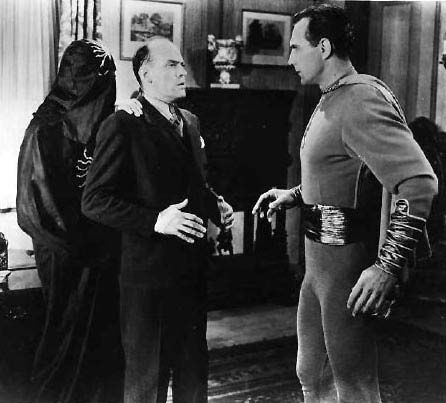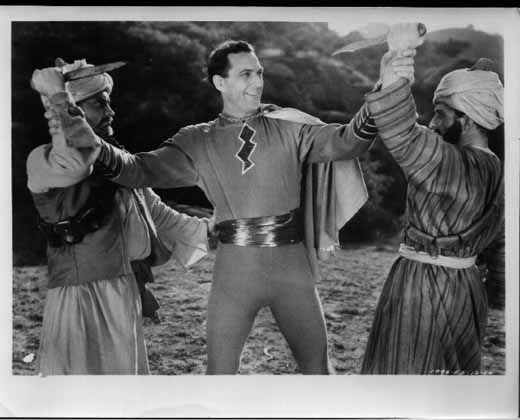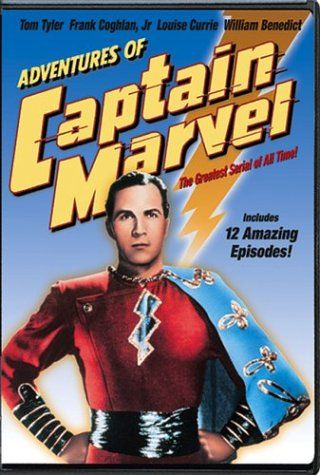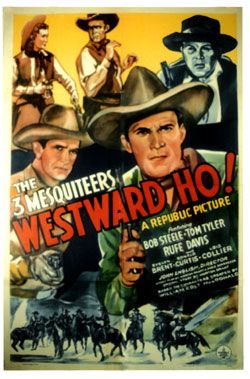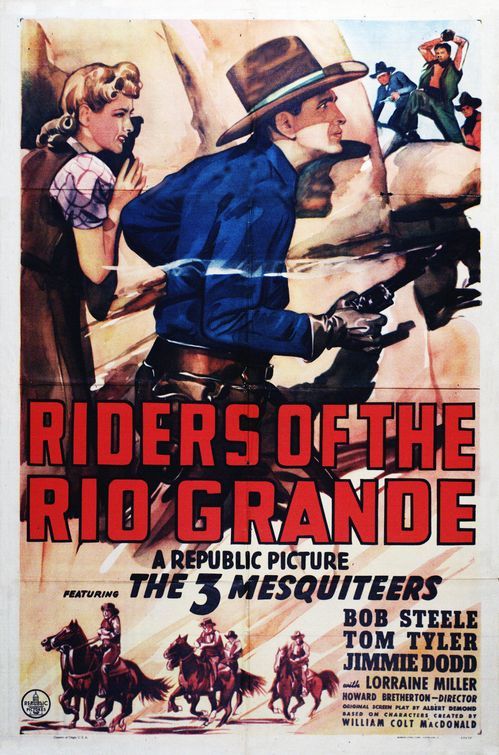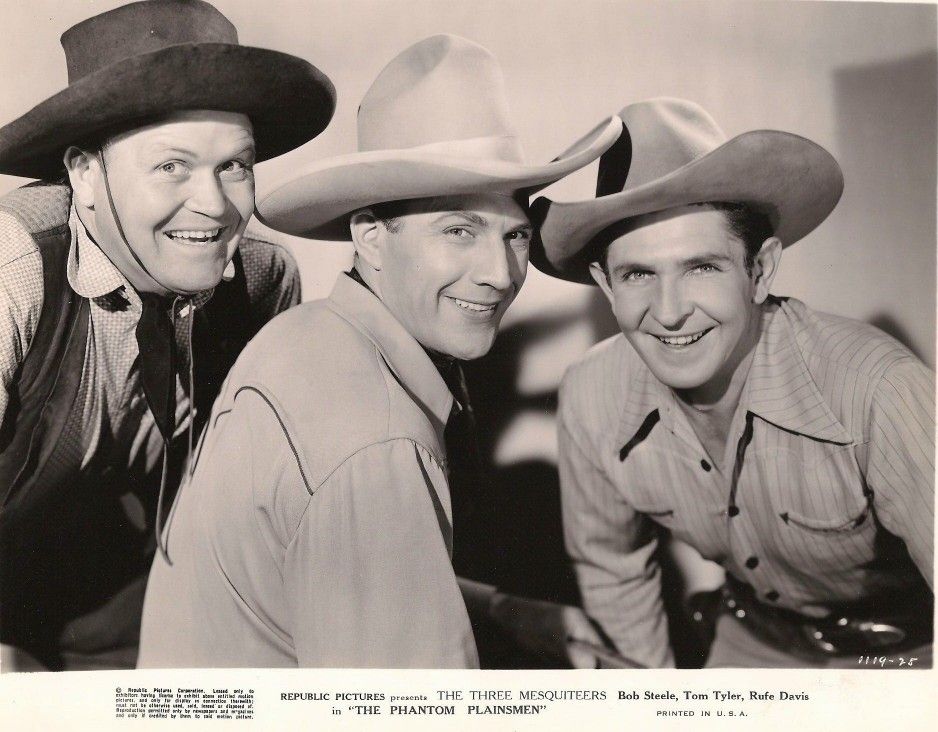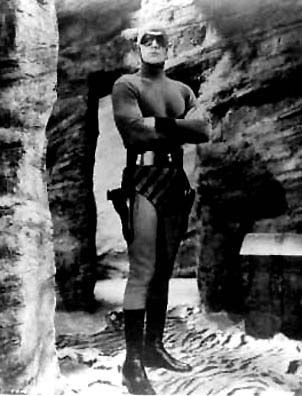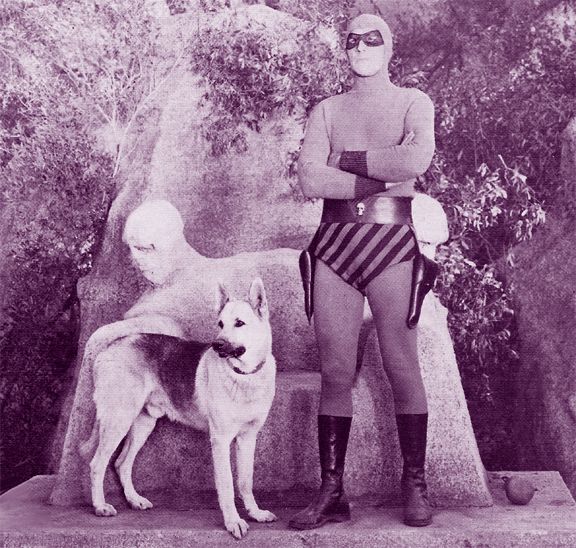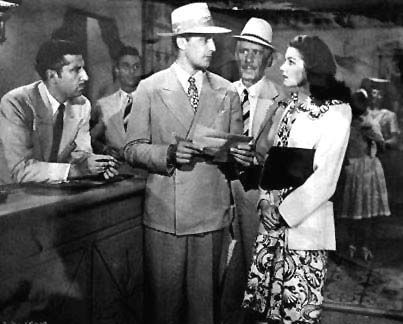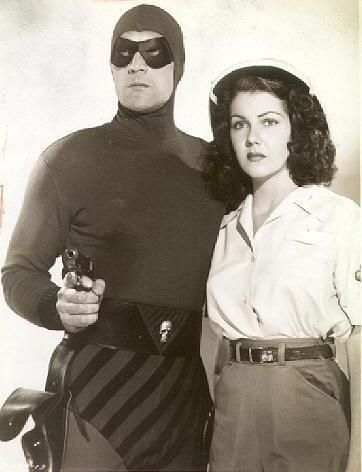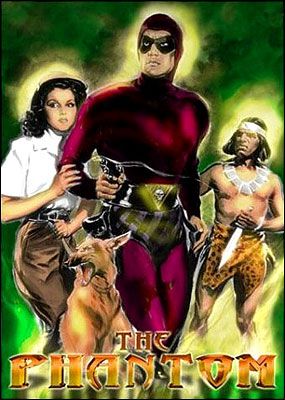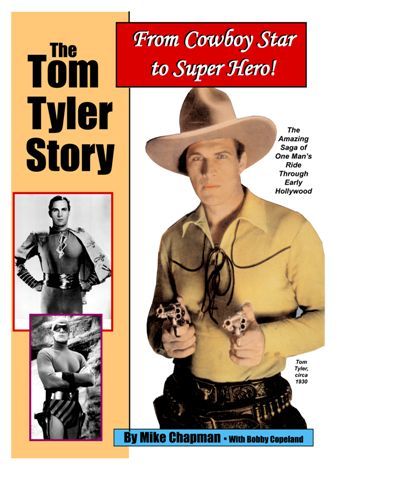We're doing a little series talking about the old black-and-white cliffhanger serials. Last week, I told you about an obscure film that turned out to be a real treat for Tarzan fans. This week, we've got the story of two different superhero serials and the unfortunate actor that starred in them both.
Vincent Markowski from Port Henry, New York, led a life in the early 1900s that in itself was worthy of a movie. He knocked around all over the country, doing all sorts of physical labor -- coal miner, lumberjack, and even some bare-knuckle boxing in local bouts. Eventually he decided to try his luck in the newborn motion-picture industry, changed his name to Tom Tyler, and came to Hollywood in the 1920s.
As luck would have it, one of the studios was looking to replace one of their cowboy-picture contract players and the casting people were impressed with Tyler's athleticism and two-fisted resume. Soon he had made a name for himself as a Western star in the silent era.
He also was a competitive weightlifter at this time and won the 1928 National Amateur Athletic Union championship as well as making the U.S. Olympic team, allowing RKO to bill him as "The Strongest Man In America."
Tyler didn't fare so well with the switch to the 'talkies,' though. His raspy voice and tough-guy delivery would have made him a Western star in the 1970s -- he was the kind of actor that was born to do spaghetti Westerns with Lee Van Cleef -- but back then audiences liked their cowboys more in the style of Roy Rogers than Clint Eastwood.
He did find some work as a villain in Westerns, most notably from John Ford in 1939's Stagecoach, who cast Tyler as the despicable Luke Plummer.
But mostly Tyler was relegated to the B-picture stuff. Lots of Westerns -- which is ironic, as Tyler did not really enjoy doing them. The rumor was that he was clumsy, and somewhat nervous around horses.
Tyler also ended up doing a lot of serials -- seven, in all -- starting with Phantom of the West in 1930.
The two that interest us here are widely regarded as classics by both serial fans and comics fans alike. In fact, the first of them, 1941's The Adventures of Captain Marvel, is usually named as the finest serial ever made.
It is awfully damn good, just in terms of its story construction, clever special effects, and sheer sense of adventure.
It's a pretty fair adaptation of the strip-- even with a couple of changes made to fit the needs of the plot, it's still remarkably faithful to the spirit of the early Fawcett comics. In the film, Billy Batson is an assistant radio operator with the Malcolm archaeological expedition, which is traveling to the Valley of the Tombs. Their goal is to find the Golden Scorpion, a sculpture fitted with lenses that can focus the sun's rays into an incredibly destructive weapon and, it is said, turn base metals to gold. Sure enough, when the expedition finds the tomb, a beam from the Scorpion device collapses the entrance and opens a hidden passage that leads Billy to the ancient wizard Shazam.
The wizard grants Billy the ability to change into Captain Marvel in order to prevent the Golden Scorpion from falling into the wrong hands. It is his "duty to see that the curse of the Scorpion is not visited on innocent people."
That's all in the first ten minutes. And with that, we're off and running. After Cap rescues the archaeologists and gets them safely to Fort Mooltan, the expedition returns to the United States and disassembles the scorpion device, distributing its lenses among themselves for safekeeping. But soon they must contend with a new threat-- the masked Scorpion wants to reassemble the deadly device for his own nefarious uses.
Several expedition members are killed one by one as the Scorpion searches for the hidden lens each one has in his possession. Cap has a number of skirmishes with the Scorpion and his thugs, including one amazing sequence where the Scorpion uses the partially-constructed lens device to bring down a mountain on the World's Mightiest Mortal. The flying and the molten-rock effects still look great today.
The suspense continues to build, especially after young Billy realizes that the hooded Scorpion (whose face we never see) has to be a member of the Malcolm expedition in his secret identity, and so the hunt is on for the traitor in the ranks. The whole thing is just a great ride.
There are a couple of things that might be jarring for modern audiences. The main one is the zest with which Captain Marvel routinely kills the bad guys.
Tom Tyler's Cap thinks nothing of hurling gunmen off buildings or breaking their necks. Clearly, due process is for sissies.
But by and large the serial deserves its reputation and it made Tom Tyler a bankable star for Republic. The funny thing is, this is one of the greatest cinematic trompe l'oeils ever, because Tom Tyler himself is hardly in the movie. About half the scenes of Captain Marvel are actually shot with stunt doubles or, in the case of the flying sequences, a papier-mache sculpture strung on wires. The picture is largely carried by a young and energetic Frank Coghlan as Billy Batson, who has almost all of the dialogue. The character of Captain Marvel is barely a walk-on, he has about as much actual screen time as Lou Ferrigno used to get on the old Incredible Hulk TV show-- and Cap generally only shows up for the same reason, to get his alter ego out of trouble at the last possible minute. (Watching it here at home, seeing Billy confronted by gunmen or trapped in a crashing plane, Julie would sometimes blurt, "Just say your magic word, stupid!")
Nevertheless, it's a fun movie and it's been available on home video for years, both on VHS and DVD. It'll probably set you back six or eight dollars and it's well worth it.
However, it's not actually my favorite Tom Tyler serial, or even my favorite superhero serial. That came a little later.
The success of Captain Marvel, as I said, made Tyler one of the go-to guys at Republic for action pictures, and they started putting him in more starring roles. Westerns, mostly.
In particular, Tyler took over the role of Stony Brooke in Republic's Three Mesquiteers movies, playing the part in the final thirteen entries in the series. (Previously, Stony had been played by both Robert Livingston and John Wayne, who did thirty-six of the Mesquiteers films between them.)
However, by 1943 audiences were getting a little tired of the Mesquiteers, and Republic was looking for a different vehicle for Tyler.
They ended up choosing the Phantom. The Ghost Who Walks.
And that is my pick for the best serial Tom Tyler ever did. It's just terrific. Frankly, I prefer it to the 1996 movie with Billy Zane in most ways. There are a couple of minor changes -- Devil is a German shepherd instead of a wolf, the Phantom is "Geoffrey Prescott" instead of "Kit Walker," stuff like that -- but for the most part it really is Lee Falk's strip on film.
The story opens with a renegade tribal chieftain assassinating the Phantom on the orders of the evil Dr. Bremmer. The dying Phantom summons his son Geoffrey home to the Skull Cave to take over as the new Phantom and Geoffrey immediately starts out after his father's killers, only to discover that they are out to sabotage the very same archaeological expedition he himself was a part of before he had to assume the role of the Phantom-- the quest to find the lost city of Zoloz! The plot thickens when it turns out that not only is Bremmer out to derail the expedition and capture the lost treasures of Zoloz for himself, but he's also cut a deal with an unfriendly power that wants to use that same part of the jungle to establish a secret airbase. It's up to the new Phantom and his faithful dog Devil to stop them.
This is a great serial, period -- something I'd recommend not just to anyone who likes the Phantom but also those folks who like Indiana Jones movies, or, hell, anyone who just plain enjoys adventure. It's got all that stuff in spades and since the Phantom is a non-powered hero, there's not a lot of distracting low-budget effects. It's just all cheerful hell-for-leather mayhem, as you can see in this clip here. Tyler is great as the Phantom -- he looks amazing in the outfit, and the gritty square-jawed delivery that didn't feel quite right for the Big Red Cheese is pitch-perfect for the Ghost Who Walks. He's got more to do here, too. The rest of the cast is pretty good as well -- not, you know, A-list, but they do fine for this kind of production.
One of the nicer things about this particular serial is that since Bangalla is a made-up place and the filmmakers chose to go with equally fictional jungle tribes (they look sort of Mayan) as well, the movie has aged well and is relatively free of a lot of the racism that plagues other serials produced in the thirties and forties.
You can find it on DVD in a really nice package, and there's even extras -- a fun gallery of Phantom comics covers from Whitman, Gold Key, and Charlton, and a wonderfully knowledgeable commentary on the first chapter by Max Allan Collins. (I'm no slouch myself when it comes to this stuff, but Collins mentions quite a few things I didn't know.)
Sadly, The Phantom was pretty much Tom Tyler's last hurrah as a leading man. His health was failing -- he suffered from rheumatoid arthritis, and could not sustain the athleticism that was his chief asset in Hollywood. Tyler continued to work in movies and television, usually in supporting roles. But his parts got smaller and smaller, and as his health continued to deteriorate he finally retired to Michigan to live with family, where he passed away in 1953.
There is a biography of Tom Tyler, The Tom Tyler Story by Mike Chapman, that makes for interesting reading if you are so inclined. It's a very well-researched piece of work and is pretty much the last word on the subject. It's a specialty-press limited-edition kind of thing, but you can find it at Amazon. And of course Captain Marvel and The Phantom are available there on DVD as well, and both are recommended.
Considering how many superhero movies have gotten screwed up over the years, it's quite an accomplishment for one guy to have starred in two unrelated ones that are both widely acclaimed as being among the best of their kind. It is a great pity that Tom Tyler was never recognized during his lifetime for the roles that have made him so beloved among comics fans and serial enthusiasts for over sixty years. Tyler never was rich, or even all that famous considering how many movies and TV shows he was in -- over a hundred and eighty in all. Like a lot of the folks who did this kind of work in the forties and fifties, whether it was in comics or pulps or serial adventure movies, there was never any thought to the stuff lasting longer than the few weeks of its initial release. Tom Tyler was reputedly just a guy who was happy to have a job and worked hard at doing it as well as he could. I daresay he'd have been very moved, and perhaps a little surprised, to see that his movies still have so many fans today.
As legacies go, that's not a bad one. We should all be so lucky to do work that keeps its audience that long.
*
That's it for this week. Next week we conclude our look at the old serials with Chapter Three: Look! Up In The Sky!
See you then.

